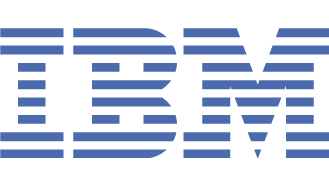IBM Backing Grid Computing Cancer Project

IBM is supporting a programme that uses donated computing power of 1.5 million Web-connected PCs for research into diseases such as cancer, AIDS and influenza
Tapping the unused cycle time of 1.5 million PCs donated by hundreds of thousands of volunteers in more than 80 countries, the Help Conquer Cancer Project working with the IBM-supported World Community Grid has achieved a breakthrough in automating the process of finding potentially cancer-causing proteins.
The technology allows the viewing of six times as many images per protein in dramatically less time than is possible manually under human review, IBM reports.
As part of the Help Conquer Cancer project, began in November 2007 by the Ontario Cancer Institute and Buffalo, New York’s Hauptman-Woodward Medical Research Institute, researchers have programmed the globally-distributed computer grid to recognize when proteins have crystallised. Researchers can then use X-rays to identify proteins that may cause cancer, Dr. Joseph Jasinski, an IBM Distinguished Engineer and program director of IBM’s Health Care and Life Sciences Institute, told eWEEK.
Automated Grid Process
“If you want to understand certain kinds of cancers, you need to study proteins that are being produced by the tumor cells so you can find ways to stop production using chemotherapy,” he told eWeek. “It’s very helpful if you know the physical shape of the protein you’re trying to target.”
With the grid’s automated process for recognising crystallised proteins, more proteins are able to be viewed, according to Jasinski. “We’ve been able to speed up the process enormously and look at more images of experiments,” he said. “It’s more likely that they’ll find a productive way to grow crystals.” The system reliably recognizes 80 percent of crystal-bearing images.
Part of the company’s Corporate Citizenship strategy, IBM enlists the unused computing power of World Community Grid. The network performs specific computations to help solve biological, environmental and health-related problems. Grid computing applies the unused cycle time of many computers on a globally distributed network to a solve a specific problem, usually of a scientific or technical nature.
Launched in 2004, the World Community Grid is the world’s largest public humanitarian computer networks, equal in power to one of the world’s most powerful supercomputers, according to IBM. In April 2010, more than 22,000 new devices joined the grid.
“In terms of the World Community Grid, I think it’s a very early example of information technology making it possible to form more virtual communities for people interested in solving all kinds of problems,” said Jasinski.
IBM and the World Community Grid have also been researching the role of protein interactions in neuromuscular diseases. In addition, Big Blue and the grid have collaborated with researchers at the Cancer Institute of New Jersey to dismantle tissue arrays to test for cancerous growths.
Idle Time On PCs
Although IBM donates hardware, software, technical services and expertise to form the World Community Grid infrastructure (Big Blue also provides free hosting, maintenance and support), it’s ordinary people donating the idle time on their PCs that form the backbone of the network, said Jasinski.
“What makes it run is people volunteering their machines,” he said. Scientists come to us from the academic community with proposals on how if they got time on this grid they could solve a problem much faster.” The requirement to participate is publishing results in public, he said.
The World Community Grid runs applications for five or six humanitarian problems at a time, including climate change and influenza. It’s also conducted human proteome folding to attempt to predict the shape of those proteins that cause diseases such as cancer, HIV/AIDS and malaria.
Even with these past developments, as far as social computing solving the world’s problems, Jasinski says the grid is just getting started.